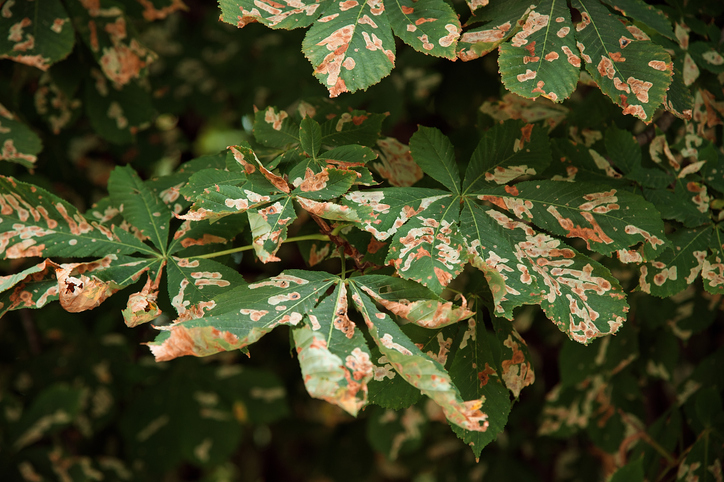Plant diseases can make your tree sick, affecting its aesthetics and overall health and integrity. When trees are severely diseased, branches or the whole tree can fall, posing potentially serious hazards to properties and to humans and animals. To avoid these hazards and preserve your trees, it’s important to understand and to look out for the following signs of common tree diseases. One of the best ways to keep your trees healthy is to schedule tree care services from our trusted tree care specialists, True Cut Tree Services, Inc! We provide an encompassing range of services, including tree trimming to help Gainesville residents maintain and preserve the trees on their properties. Contact us today to schedule a free tree care assessment!

Anthracnose
Anthracnose is a common fungal disease affecting shade trees, resulting in lead spots, leaf-cupping or curling, and early leaf drop. This fungal disease can affect other plants, such as those producing fruit and vegetables, and it can cause dark, sunken lesions on leaves, stems, flowers, fruits. It can also attack developing shoots and expanding leaves. Because fungus thrives in moist and warm conditions, anthracnose thrives in Gainesville, particularly during seasons with heavy rainfall. On leaves, look out for small, irregular yellow or brown spots. These spots darken as they age and can expand to cover the whole leaf. On trees, it can kill the tips of young twigs and young leaves. Look out for these signs and defoliation of the tree.
Apple Scab
Apple scab is a fungal disease caused by the fungus Venturia inaequalis, most common in areas of high rainfall and humidity affecting crabapple, apple, pear, mountain ash, and Cotoneaster trees. If uncontrolled, apple scab can defoliate trees and blemish fruit to the point it is rendered inedible. With this disease, you’ll notice scab-like lesions on the plant’s leaves and fruit. Infected leaves will have olive-green or brown lesions. A significant amount of leaf loss will be seen when apple scab occurs many years in a row. In addition, leaf spots often form along the lead veins. As Fruit infected with apple scab grows, it becomes deformed and cracked. Planting disease-resistant trees are the best way to prevent apple scab. Contact True Cut Tree Service, Inc. for more information.
Leaf Rust
Rusts are fungal diseases affecting the foliage of several hardwood species of trees. While leaf rust is a common tree problem, it is rarely severe. Trees with leaf rust will show yellow spots on the upper surfaces of their leaves. Close examination of the leaves reveals small, yellow-orange-colored bumps filled with powdery spores. The most severe effect on trees results in early defoliation, affecting overall tree growth. Rust diseases can affect various trees, including cottonwood, poplars, willows, oaks, ash, birch, maples, and plum trees, among other tree varieties. Growing rust-resistant trees is typically the best and most economical method of minimizing rust losses. Scheduling a free tree care assessment can help you protect your trees; contact our tree care company today.
Powdery Mildew
Powdery mildew is a condition caused by fungal pathogens that grow superficially on the surface of trees and produce white fungal spores and threads. One of the most common diseases, powdery mildew, is easily recognized. When the fungus attacks young tree tissue, the disease distorts leaves and flowers, and, as the infection increases, the tissue becomes dried and brown. The disease is characterized by white spots or patches that resemble talcum powder. Powdery mildews can become severe in warm weather, with succulent tissue being more susceptible to infection. While many plants develop a resistance to powdery mildew, chemical treatments can help effectively control the disease. A professional tree care company can help ensure your trees are resistant to this and other diseases.